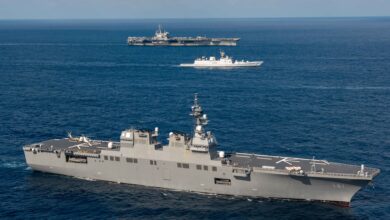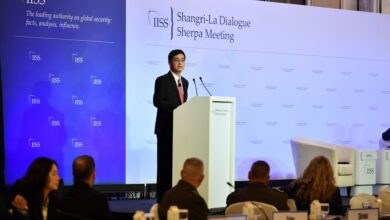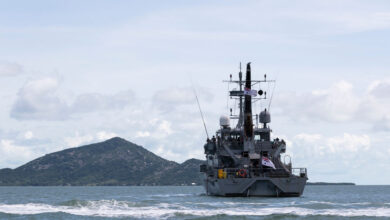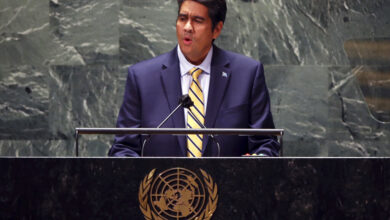LANPAC: Multilateral approaches key to future, Indo-Pacific military leaders say

FORUM Staff
Multi-domain operations in megacities, nonkinetic warfare, cyber superpowers. These are just some of the shared challenges Indo-Pacific militaries may face that attendees discussed at the sixth annual Land Forces of the Pacific (LANPAC) symposium and exposition held May 22-24, 2018, in Honolulu, Hawaii.
These challenges have one thing in common: Multilateral approaches are the best way to address them, according to Gen. Robert B. Brown, U.S. Army Pacific commanding general, pictured. “The world is complex, and multilateral solutions are the future,” he said at the conference, hosted by the Association of the United States Army Institute of Land Warfare.
LANPAC 2018 brought together more than 1,600 participants from industry and armies, including military leaders from 26 Indo-Pacific nations, to discuss future challenges. “None of us can go it alone. It does not make sense for any of us to try to go it alone,” Brown said.
“LANPAC is a necessary platform for connectivity,” Lt. Gen. Mahesh Senanayake, commander of the Sri Lanka Army, said at the conference. “The relationships that are built here will allow our neighboring countries to share information and learn from each other.”
Participants came from nations ranging from Australia and New Zealand to the Philippines and Indonesia to Japan and South Korea to Mongolia, Nepal and Taiwan to Fiji and Vanuatu. They discussed expanding global partnerships, leadership development and multilateral approaches to everything from cyber attacks to humanitarian assistance and disaster relief missions, among other topics, during the three-day event.
Conflict in the future will be “domain agnostic,” Lt. Gen. James Dickerson, commanding general of the U.S. Army Space and Missile Defense Command, explained. Nonkinetic activities such as information, cyber and space have no boundaries but underlie every type of military operation, Dickerson said, quoting his boss, Gen. John Hyten, commander of U.S. Strategic Command. “There’s no such thing as war in space; there’s just war. There’s no such thing as war in cyber; there’s just war.”
Militaries will need to approach such challenges from an adversary perspective not a domain perspective, he said. For example, information operations must be incorporated throughout all phases of missions and leveraged across all domains.
The U.S., for its part, is launching the Army Futures Command in July 2018, which will be led by a four-star general, to ensure U.S. forces achieve “clear overmatch in the future conflicts” and that the U.S. and its partners are ready for the next requirements, said Gen. Gus Perna, head of the U.S. Army Materiel Command. “Future enemies are not constrained by bureaucracy of their governments and/or the funding. They are not constrained by taking our good ideas and applying them to what they want,” Perna said. “Those who are going to be successful assess and make changes.”
The new command will modernize the U.S. Army by integrating the future operational environment, threat and technologies to develop and deliver force requirements, organizations and materiel capabilities of the future. “We will be able to build partners around the world, the capacity needed to fight anybody because our partners will be with us and our goal is for them to be equally manned and equipped,” Perna said. “It’s sessions like today that allow us to build the relationships and garner the ideas and work together, so that in the future we are one team, not collective teams.”
In concluding remarks, Brown said, “Great perspectives were brought into our panel discussions by our international partners. We were able to move forward in our conversations on multilateral approach. Interoperability is difficult and takes time, but it is critical.”




